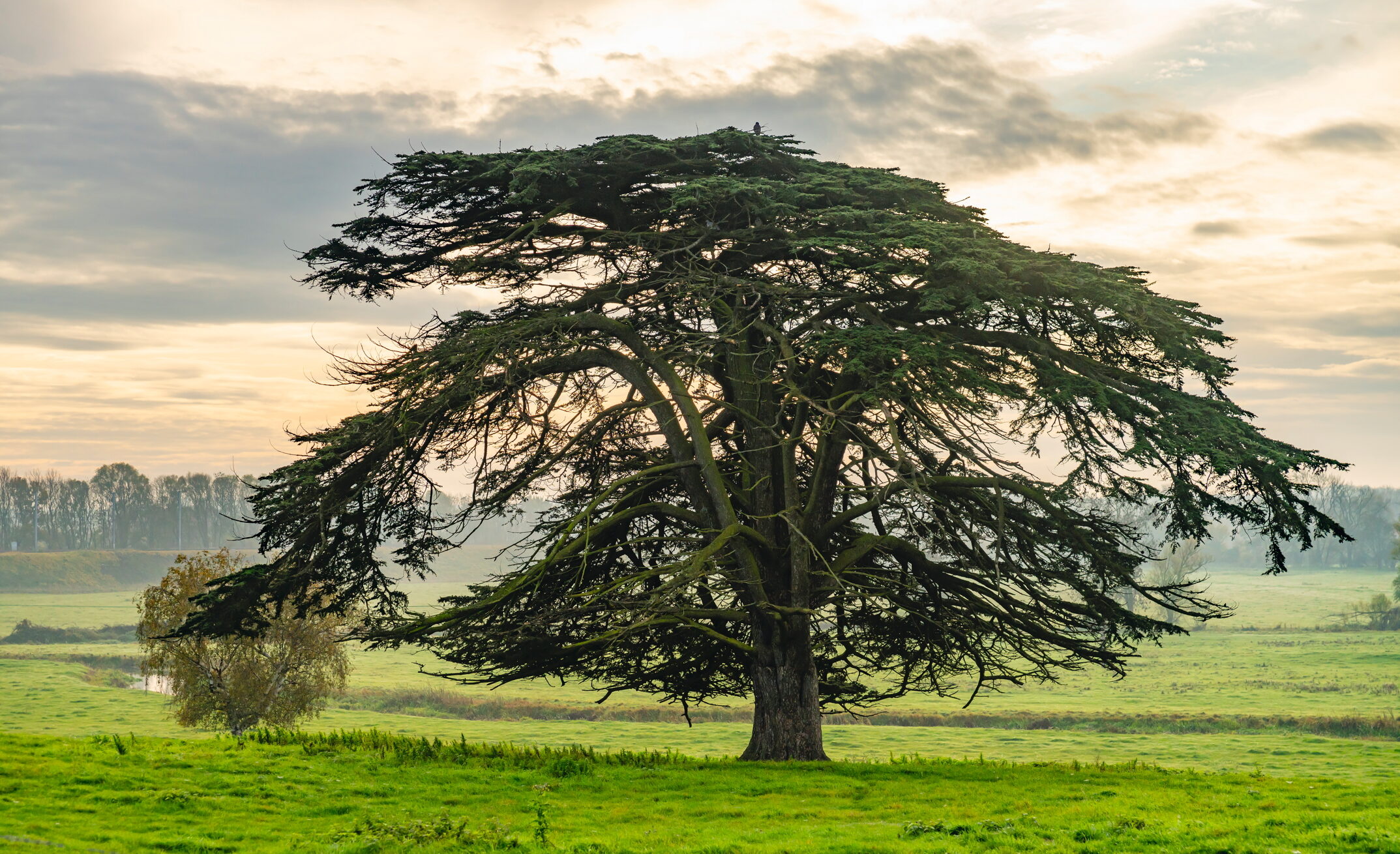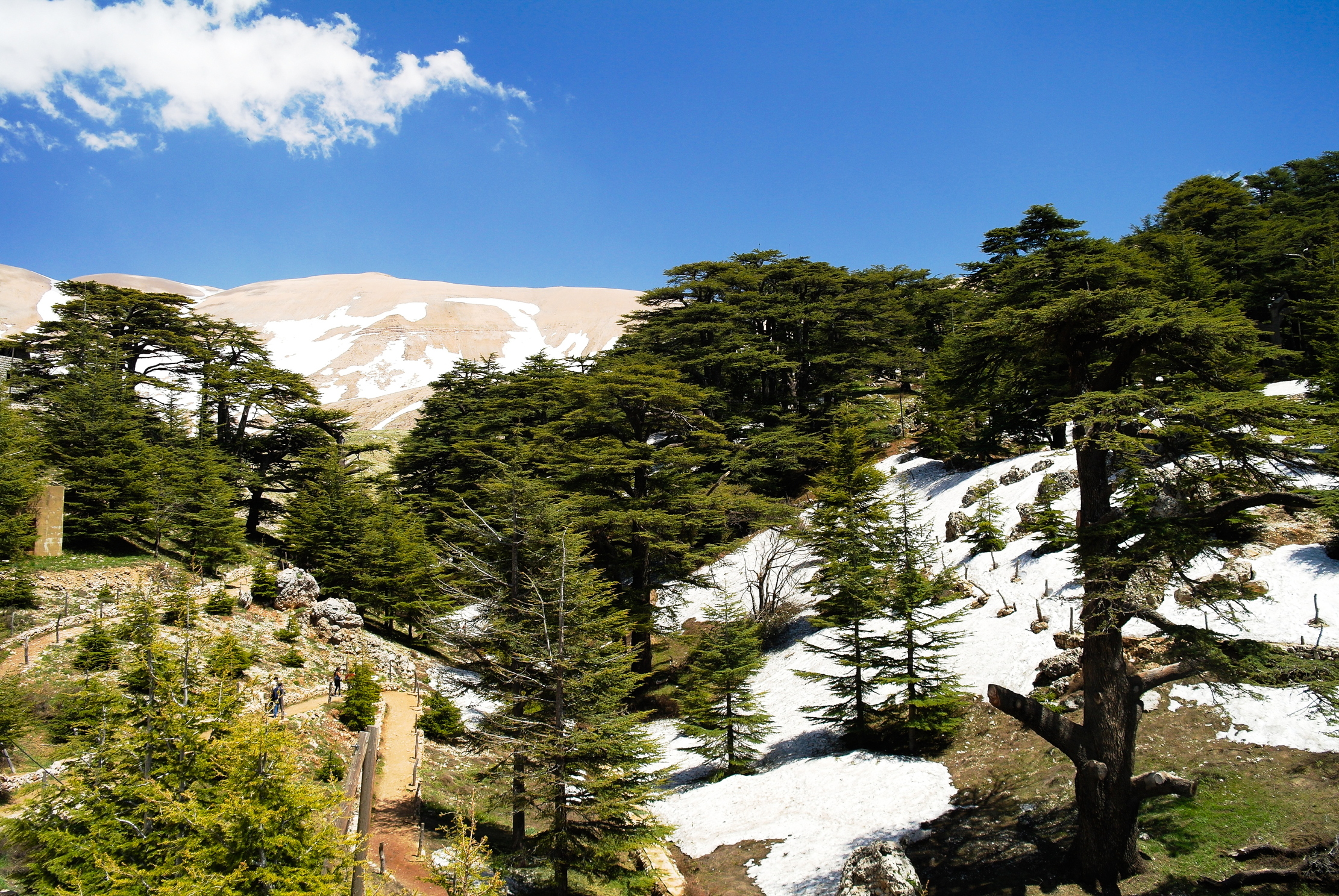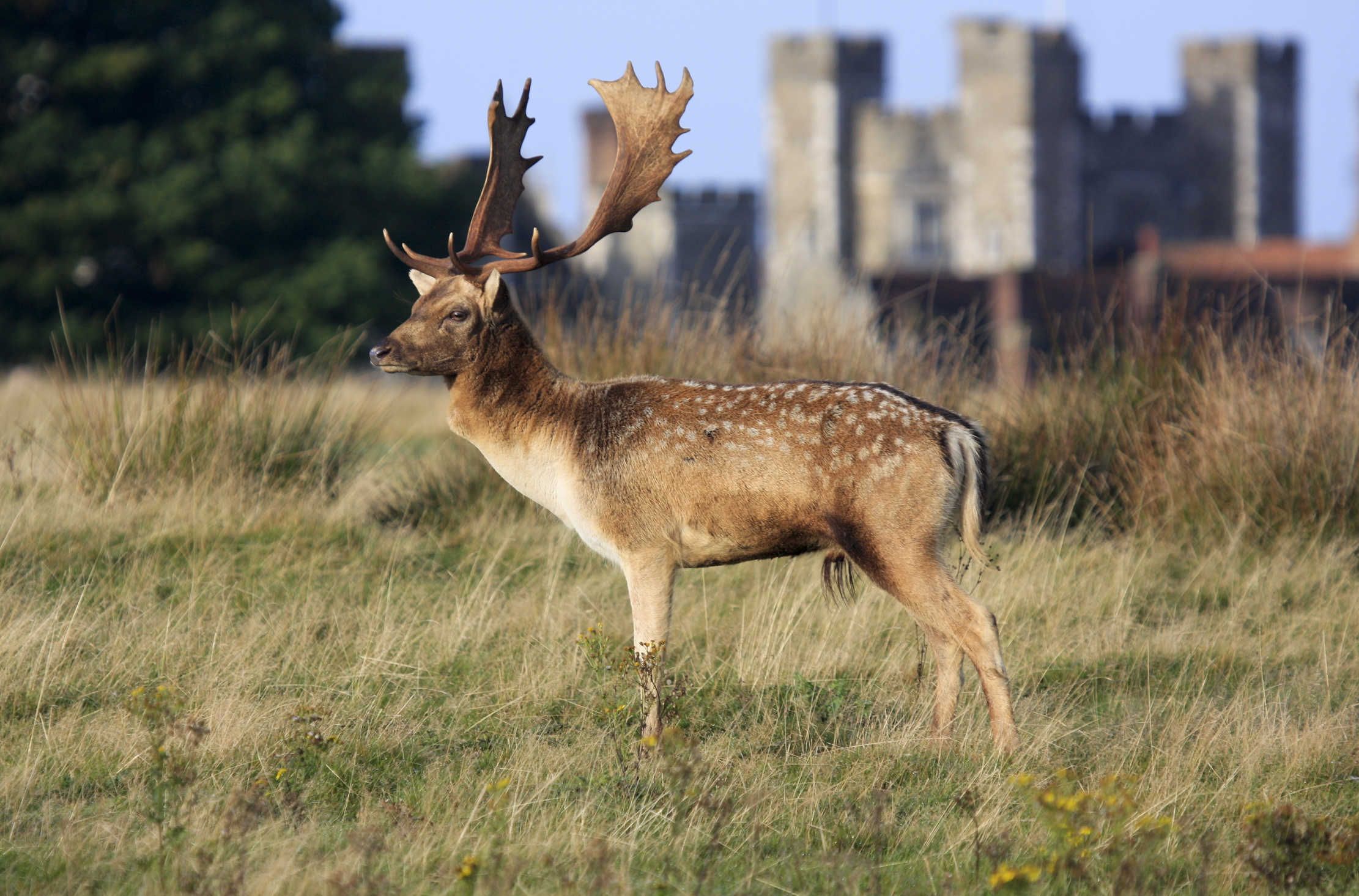Trees of God: The story of the mighty cedar
Once considered an exotic addition, cedar trees were frequently employed by ‘Capability’ Brown as topographical punctuation marks and are now as loved and reassuring as any fine church steeple.


In The Epic of Gilgamesh, a Sumerian poem dating from about 2000BC, gigantic cedars form a forest of terrifying extent, ‘where no man would willingly walk and explore its depths’. The titular hero successfully slays a monster who lives in the forest and then celebrates by chopping down some of the trees.
Generally, however, cedars have inspired great respect. In several religions, they are referred to as ‘trees of God’. In the British landscape, they are associated with serenity and beauty, as loved and reassuring as any fine church steeple or familiar view. Until they succumb to age or disease, only a vandal would want to fell one.
There are three types of true cedar present here, the cedar of Lebanon (Cedrus libani), deodar (C. deodara) and Atlas cedar (C. atlantica), the latter usually in its blue Atlas glauca form. All are non-natives. Several evergreens loosely named as cedars include the incense cedar and the white cedar, but these are, in fact, cypresses and the Chinese cedar is a broadleaf member of the mahogany family.
Most tree guides warn how tricky it is differentiating between the true cedars. In their early decades, they all have pyramidal shapes and the needles grow in bunches. Cones are large, barrel-shaped and generally sit upright on the branch. Unhelpfully, many cedars don’t follow the growth form defined in the alliterative mantra, ‘ascending Atlas, level Lebanon, drooping deodar’. A mature Atlas cedar or deodar will in time take on that reposeful, rather stately air automatically associated with the cedar of Lebanon.

If you are standing in front of a truly venerable specimen, however, it’s going to be a cedar of Lebanon. Although the deodar and the Atlas cedar were not introduced to Britain until 1841, C. libani came much earlier. The exact date is disputed, but it’s generally accepted that the Revd Edward Pocock (1604–91), an Arabist scholar and sometime chaplain to the Turkey Company at Aleppo, introduced the species to Britain.
At some stage, he is believed to have given his brother — chaplain to the 4th Earl of Pembroke at Wilton House in Wiltshire — cedar cones for planting. A cedar felled on the estate in 1874 had a ring count of 236, giving an approximate planting date of 1638. However, it is the still-living cedar Pocock planted from seed in his garden at Childrey near Wantage, Oxfordshire, in 1646, where he served as rector after his return to this country, that is recognised as Britain’s oldest cedar.
By 1664, there was enough familiarity with the species, possibly owing much to illustrations worked up from the descriptions of travellers to the Near East, for John Evelyn (1620–1706) to refer to the ‘majestical’ tree in the first edition of Sylva (1664). In 1732, two of the four trees planted in the Chelsea Physic Garden, London SW3, in the early 1680s were the first to produce cones in this country.
Exquisite houses, the beauty of Nature, and how to get the most from your life, straight to your inbox.
A sense of the impression these exotics made on visitors seeing them in their native Lebanese mountains (the cedars there are now a UNESCO World Heritage Site) is gained from the observations of another travelling churchman, Richard Pococke (1704–65) in his A Description of the East and Some Other Countries, published between 1743–45. Visiting a grove at ‘Mount Libanon’, he wrote that: ‘The great cedars, at some distance, look like very large spreading oaks; the bodies of the trees are short, dividing at the bottom into three or four limbs, some of which… appear something like Gothic columns, which seem to be composed of several pillars; higher up they begin to spread horizontally.’ Pococke, who found that one tree measured 24ft in circumference, recorded that Christians celebrated the festival of the Transfiguration on altars set against these trees.
Back in Georgian Britain, curator of the Chelsea Physic Garden Philip Miller (1691–1771) detailed in The Gardeners Dictionary (1731) that cedars presented agreeable prospects at the end of a vista, especially if planted on rising ground. He noted the distinctive way the plate-like boughs waved in the wind, a rather languorous, swaying effect that has enchanted cedar admirers ever since.
Cedar Spotting
Chiswick House, London W4
Laid out by the 3rd Earl of Burlington and William Kent in the 1720s, two very old cedars of Lebanon are situated on the lawn in front of the house. The lowest branches dip to the ground and the needle clusters have formed immense mats.
Dryburgh Abbey, Roxburghshire
The grounds of this Gothic ruin hold a fine collection of old trees. It is only fitting that the burial place of Sir Walter Scott, always partial to antique effects, should number several venerable cedars of Lebanon.
Bowood Arboretum and Gardens, Wiltshire
Many cedars of Lebanon feature in Capability Brown’s design of the 1760s, one of which was measured at more than 126ft in 2016, making it one of the tallest of the species in Europe.
Eastnor Castle, Herefordshire
A deodar here has recently been recorded as being 125ft tall and 20ft in width.
Gunnersbury Park, London W5
There are some fine examples of blue Atlas cedars around the temple and on the lawns to the west of the large mansion. There are also deodars and a very large cedar of Lebanon, making it the perfect spot to test your identification skills.
Duncombe Park, North Yorkshire
A popular location for period films, including the 2020 adaptation of The Secret Garden, there grows a fine deodar on the terrace next to the orangery.
Leonardslee Gardens, West Sussex
Home to one of the earliest deodar plantings, dating from the 1850s, which has a girth of 14ft.
Capability Brown (1716–83) made use of the trees in his park landscapes, often as punctuation marks by the lake or near the house, contrasting with the more prodigiously planted native species such as elms, oaks and beeches. By the early 19th century, few country house grounds lacked a cedar of Lebanon. In his In Search of English Gardens (1829), John Claudius Loudon (1783–1843) visited Goodwood House, West Sussex, where the 3rd Duke of Richmond had planted a vast number of C. libani in the 1760s. Loudon observed ‘a good many cedars of considerable size in the pleasure-ground, and in that part of the park nearest the house’. Some of the cedars on the estate today survive from the original planting.
The deodar, also known as the Himalayan cedar, is the tallest of the cedars (in its native habitat, it can reach more than 200ft in height) and it is considered a divine tree by Hindus. Although more obviously pendulous in profile than a cedar of Lebanon, it still has great presence and was destined to become another popular ornamental tree of parks, avenues and arboreta. In 1850, it was referred to in Annals of Horticulture (1846) as being ‘of exquisitely beautiful outline and graceful spray, giving an air of refinement to every lawn and shrubbery to which it has been admitted’.
Less frequently seen is the Atlas cedar, found in its wild state in the mountains of Morocco and Algeria, with needles a deep shade of green. A more likely spot is the blue Atlas cedar. The blue-grey tint is distinctive and the needle clusters are noticeably smaller than those of cedars of Lebanon and deodars.
Both the deodar and the blue Atlas are tolerant of pollution, which has seen them planted in urban situations. The cedar of Lebanon’s propensity to drop branches, often without apparent cause, has made it a less popular choice. However, Miller wrote in The Gardeners Dictionary that the tree thrived on poor soil and was quick growing. He expressed surprise that it was not more widely planted here, suggesting its tolerance of the coldest parts of the Lebanese mountains, where snow continued for most of the year, would make it ‘a great ornament to barren bleak Mountains where few other trees would grow’. Valued for the quality of its timber (as are the other true cedars), it’s been suggested that increasing drought conditions could make it a more popular silvicultural proposition on lowland sites in southern Britain in the future.
For now, this dark cedar, included by Alfred, Lord Tennyson in his poem Maud — ‘O art thou sighing for Lebanon/In the long breeze that streams to thy delicious East’ — and its close relatives are among our greatest ‘impact’ trees. They may be exotic introductions to parkland landscapes, but, granted space to spread their graceful, horizontal boughs, they appear to have been with us since time immemorial.
Jack Watkins is a freelance writer and long-time contributor to Country Life.

John Lewis-Stempel: The deer parks that came to define us
A Roman conception that came to define the topography of England, the deer park was both a status symbol for

Credit: Getty Images
Mud, glorious mud: Why we should get down and dirty in our wet earth
We loved it as a kid, and we should love it as an adult. Mud is fun to walk through,

'A square yard of estuary mud contains the energy equivalent of 16 chocolate bars': John Lewis-Stempel on the life of the English Estuary
Part water, part earth and a habitat of constant movement, the bleak and desolate estuary environment is an acquired taste.
Jack Watkins has written on conservation and Nature for The Independent, The Guardian and The Daily Telegraph. He also writes about lost London, history, ghosts — and on early rock 'n' roll, soul and the neglected art of crooning for various music magazines
